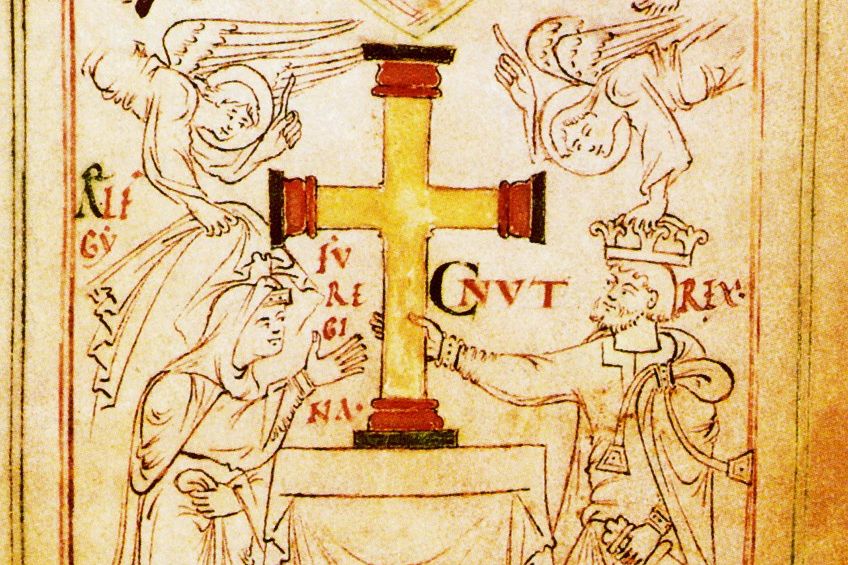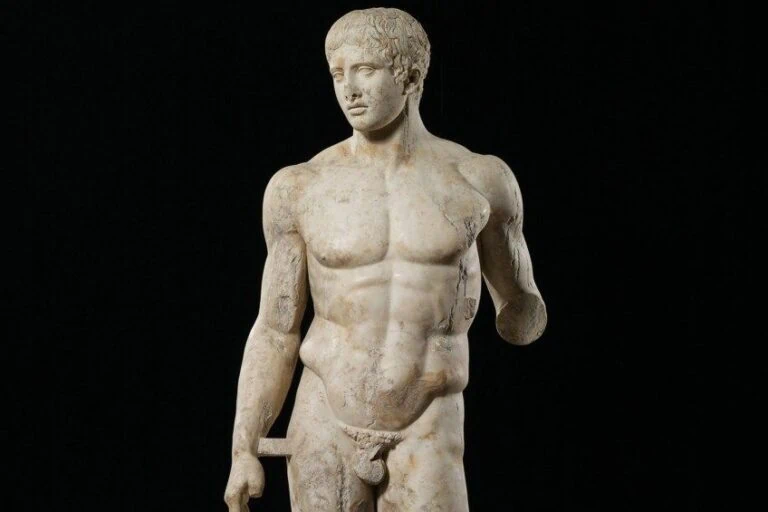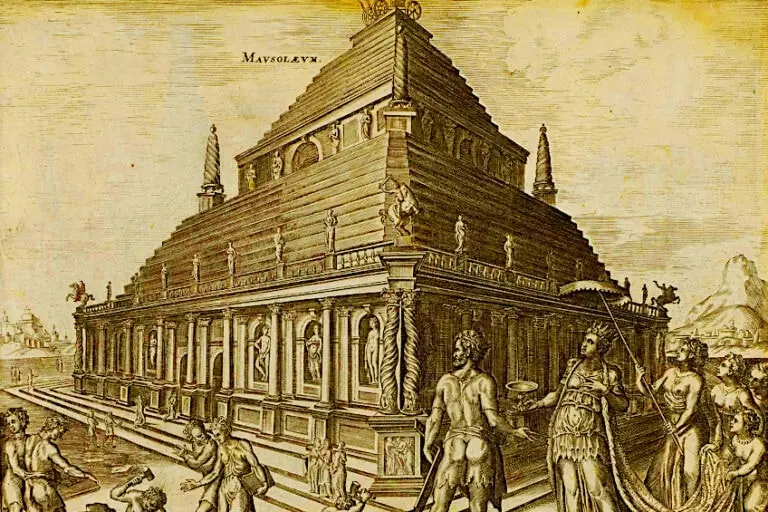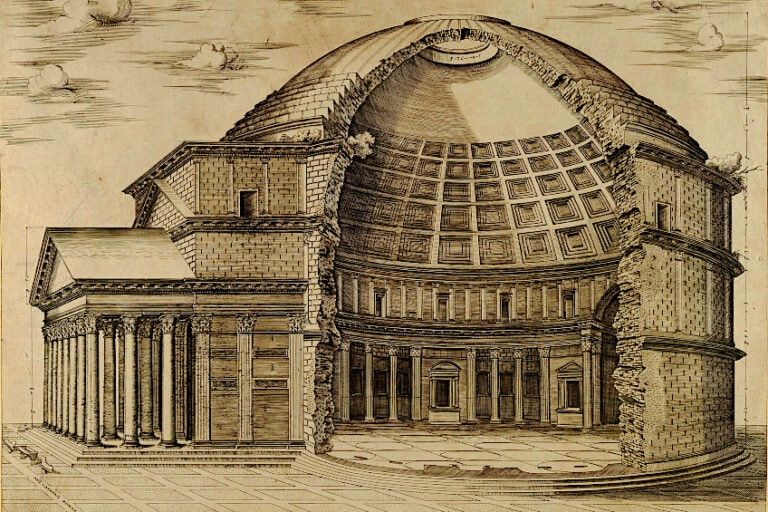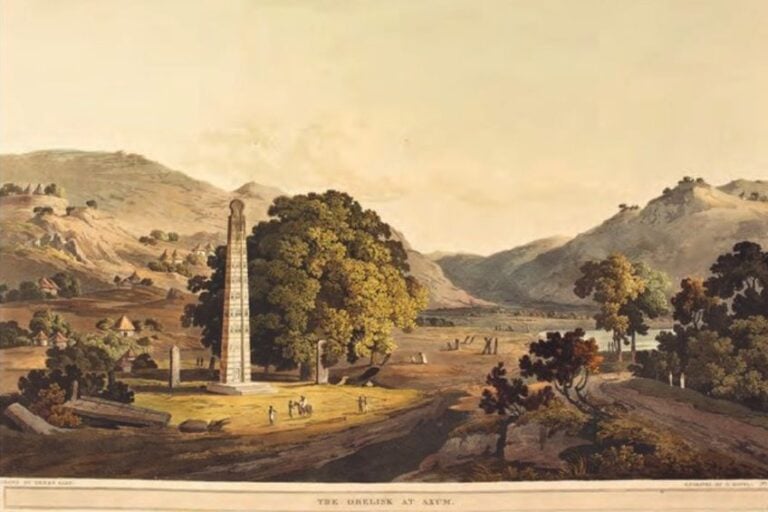Viking Artifacts – Culturally Important Norse Mythology Artifacts
It’s pretty safe to say that the modern media has made the lives of Vikings look pretty cool. After all, the popular TV of the same name made around 365 million US dollars in 2020 alone, and continues to pull in huge sums on streaming platforms. Although the show is pretty accurate, it does paint something of an exaggerated depiction of the Scandinavian natives and their reigns. This being said, the culture, lives, and spread of the Vikings has sparked global interest in recent years, and almost completely by chance, archaeologists and historians alike have uncovered some interesting Viking artifacts in recent years. This being said, let’s have a look at exactly who Vikings were as a people as well as some of the interesting artifacts they left behind.
Contents
- 1 Who Were the Vikings?
- 2 Famous Viking Artifacts
- 2.1 The Hunterston Brooch (700 CE)
- 2.2 Glass Gaming Piece 793 CE
- 2.3 The Gjermundbu Helmet (793 – 1066 CE)
- 2.4 The Valkyrie From Hårby (800 CE)
- 2.5 Coppergate Excavation (9th Century CE)
- 2.6 The Ulfberht Swords (9th Century CE)
- 2.7 The Vail of York Hoard (9th – 10th Century CE)
- 2.8 The Oseberg Heads (834 CE)
- 2.9 The Gokstad Ship (890 CE)
- 2.10 Silver Inlaid Axe head (900 CE)
- 2.11 The Ardnamurchan Boat Burial (10th Century CE)
- 2.12 Gold Neck-Ring (10 Century CE)
- 2.13 The Hiddensee Hoard (10th Century CE)
- 2.14 Viking Weighing Scales (1000 – 1200 CE)
- 2.15 Winchester Manuscript (1031 CE)
- 2.16 Seeress’s Magic Staffs (1050 CE)
- 2.17 The Hogback Tombstones (12 Century CE)
- 2.18 Viking Bone Skates (12th Century CE)
- 2.19 The Lewis Chess Pieces (1150 CE)
- 3 Frequently Asked Questions
Who Were the Vikings?
The term Viking is thrown around a lot these days, but do you know exactly what a Viking is? The term Viking is actually a modern-day term used to describe a community of sea-faring people native to Scandinavia. They were essentially a group of tribes who traveled the sea in search of places to settle down while purging, pillaging, and raiding any settlements they saw fit. Their people traveled far and wide in search of new lands to conquer and trade with in some instances. Their travels took them all over Europe between 793 to 1066 BCE.
They raided, colonized, traded, and settled, throughout the region with a determination that seems almost hellbent, even by today’s standards.
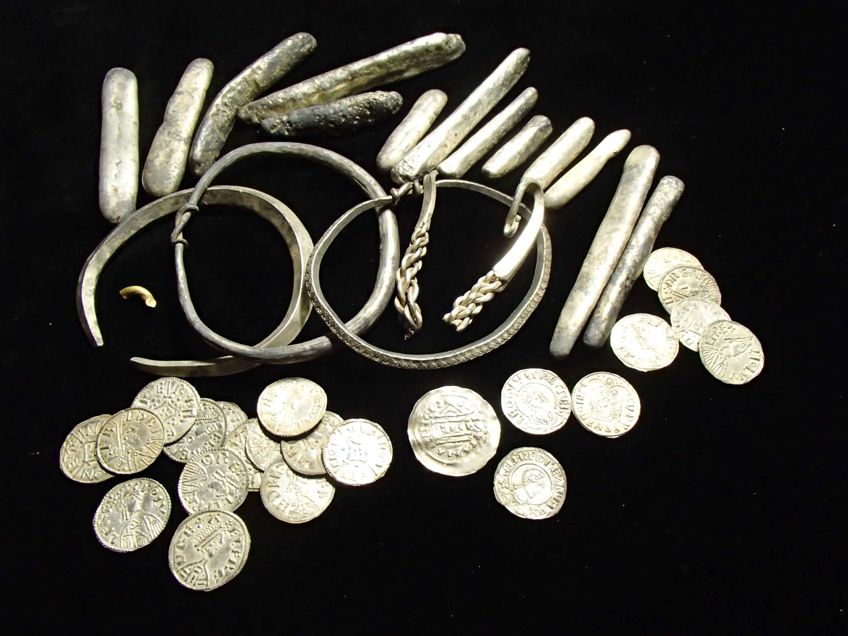 The Watlington Hoard (878 AD), located in the Ashmolean Museum in the United Kingdom; The Portable Antiquities Scheme/ The Trustees of the British Museum, CC BY-SA 2.0, via Wikimedia Commons
The Watlington Hoard (878 AD), located in the Ashmolean Museum in the United Kingdom; The Portable Antiquities Scheme/ The Trustees of the British Museum, CC BY-SA 2.0, via Wikimedia Commons
Vikings were also notorious for their piracy. Viking vessels were a feared sight in ancient Europe, which isn’t surprising considering that Vikings were also known for their ferocious fighting ability and at times, a complete disregard for self-preservation in times of conflict. Over their years of conquest Vikings acquired considerable wealth through trading, pillaging, and piracy.
Besides acquiring wealth, Vikings also sought to discover new lands, which led them to travel incredible distances on ships that by today’s standards would leave even the most experienced sailor confused. Despite the odds, the Viking people were able to travel all the way to the Mediterranean, Bulgaria, Northern Africa, North America, and even the Middle East!
Due to their extensive travels and by extent contact with other formal societies, Viking culture was constantly changing. They learned new ways to navigate, different methods of cooking, gained medicinal knowledge, as well as a new perspective about the known world.
However, there was a drawback to all of the cultural diversity the Viking people experienced.
Unlike most other established societal units around the world, because Vikings were pseudo-nomadic, they often integrated aspects of different cultures into their own. While this is great for anthropological reasons, it means that there aren’t many artifacts that are derived purely from Viking culture or religion. This means that when exclusively Viking artifacts are found, it’s a pretty big deal.
Famous Viking Artifacts
As we mentioned previously, discovering artifacts that display Viking culture without any other sociocultural influences can be tough, but it doesn’t mean that there aren’t any out there. There are actually quite a few famous Viking artifacts all around the world, so let’s have a look at a few of them, where they were found, where they are now, how old they are, and what significance they bear to our understanding of the Viking people.
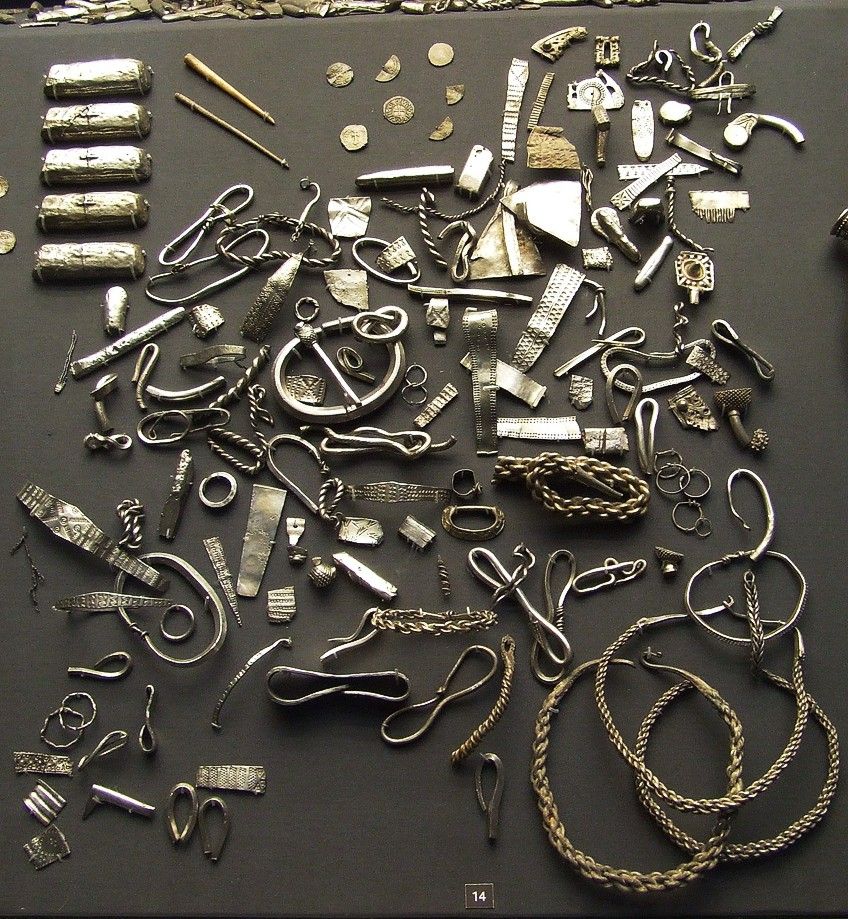 Cuerdale Hoard (905 AD), located in the British Museum in the United Kingdom; British Museum, CC BY-SA 3.0, via Wikimedia Commons
Cuerdale Hoard (905 AD), located in the British Museum in the United Kingdom; British Museum, CC BY-SA 3.0, via Wikimedia Commons
The Hunterston Brooch (700 CE)
| Artist | Unknown |
| Medium | Silver, gilt, amber |
| Date Created | 700 CE |
| Dimensions (cm) | 12.2 (d) |
| Current Location | National Museum of Scotland, Edinburgh, Scotland |
| Location of Discovery | Govan and Linthouse Parish Church, Edinburgh, Scotland |
It’s a pretty well-established notion that if the ancient Vikings saw something they wanted, they simply took it. While this might be true in the context of pillaging and raiding settlements, sometimes they simply found things, liked the way that they looked, and kept them for no other reason than that.
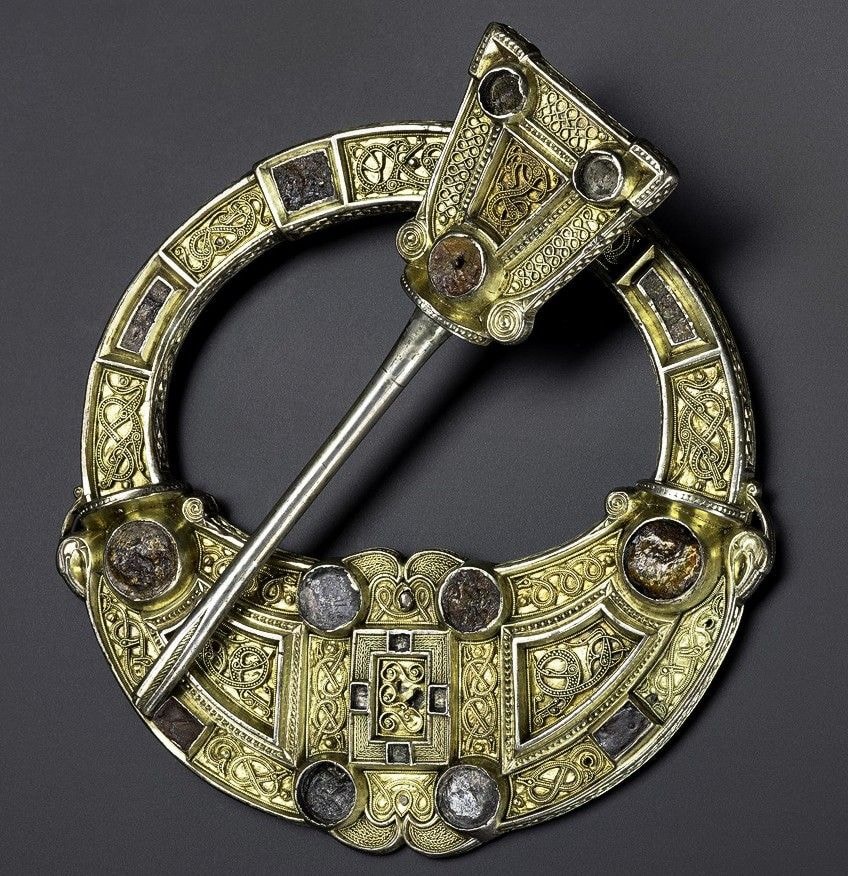 Hunterston Brooch (c. 700 AD), located in the National Museum in Scotland; National Museums Scotland, CC BY-SA 4.0, via Wikimedia Commons
Hunterston Brooch (c. 700 AD), located in the National Museum in Scotland; National Museums Scotland, CC BY-SA 4.0, via Wikimedia Commons
The Hunterston Brooch was allegedly found in 1826 by two men digging a drainage hole near Goldenberry hill. The brooch’s outer circle is filled with little bird heads, while the center contains a golden glory and a cross that is supposed to represent the rising of Jesus Christ.
The brooch is believed to be Gaelic in origin due to the inscription on the back reading: “Melbrigda owns this brooch”.
Glass Gaming Piece 793 CE
| Artist | Ancient Scandinavian peoples |
| Medium | Glass |
| Date Created | 793 CE |
| Dimensions (mm) | 24 (h) |
| Current Location | Public university in Durham, England |
| Location of Discovery | Durham, England |
While the image that most people have of Vikings is that of strong, seafaring people they had other interests as well. One of them was a board game that they took with them pretty much everywhere they went. This most valuable Viking glass piece was part of a set that was used in a game called Hnefatafl, which was essentially like chess before it became popular.
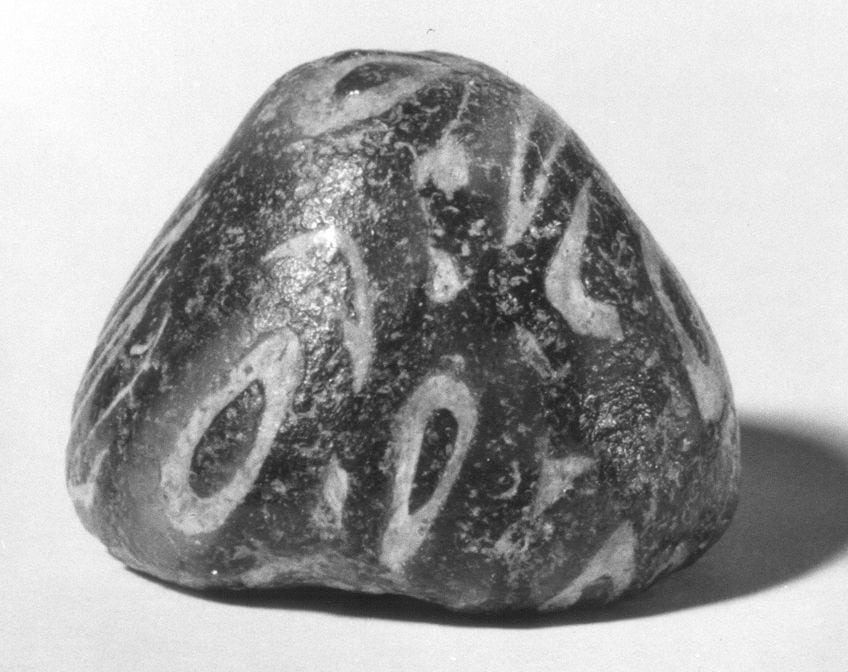 Glass Gaming Piece (793 CE), located in the Public university in Durham, England; Metropolitan Museum of Art, CC0, via Wikimedia Commons
Glass Gaming Piece (793 CE), located in the Public university in Durham, England; Metropolitan Museum of Art, CC0, via Wikimedia Commons
The game involves a bunch of kings and their knights defending their section of the board from about the same number of attackers. These games were found all over areas where Vikings were known to have settled, but this most valuable Viking glass piece is something special and is likely to have belonged to quite an important person considering the medium and hand-crafted nature of the piece.
The Gjermundbu Helmet (793 – 1066 CE)
| Artist | Unknown |
| Medium | Iron |
| Date Created | 793 – 1066 CE |
| Dimensions (in) | 12.4 x 12.4 x 11.61 |
| Current Location | University of Oslo, Oslo, Norway |
| Location of Discovery | Haugsbygd, Ringerike, Buskerud, Norway |
While there are many depictions in modern media of Viking helmets with horns protruding from the front or top, there is no evidence that they actually had any. This helmet discovered in Buskerud Germany is a prime example of an authentic Viking helm.
It is made entirely of iron and is reminiscent of the old helms used by Spartan infantry.
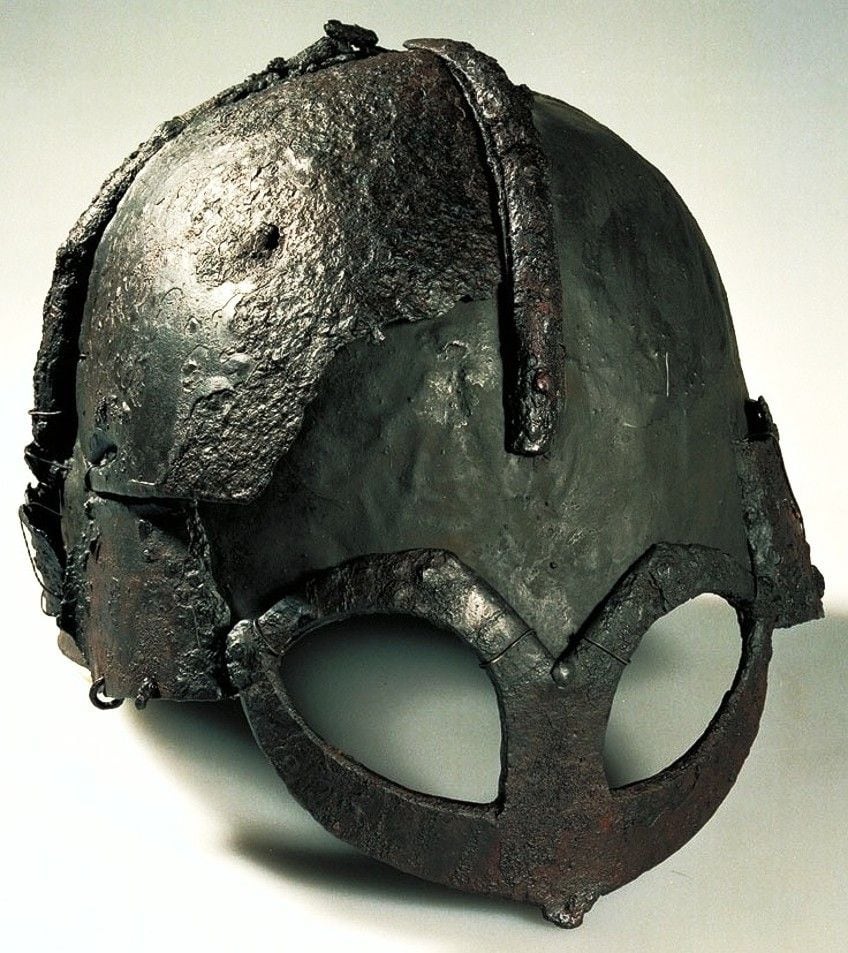 The Gjermundbu Helmet (c. 10th Century), located in the University of Oslo in Norway; NTNU Vitenskapsmuseet, CC BY 2.0, via Wikimedia Commons
The Gjermundbu Helmet (c. 10th Century), located in the University of Oslo in Norway; NTNU Vitenskapsmuseet, CC BY 2.0, via Wikimedia Commons
This and a number of other Viking relics were discovered during a sewage excavation in the city, at which point the University of Oslo was promptly notified. Although the helm appears whole now, it was actually discovered in a number of fragments that were later pieced together.
If you’d like to see it in person, it can be viewed at the Museum of Cultural History, which forms part of the University of Oslo.
The Valkyrie From Hårby (800 CE)
| Artist | Unknown |
| Medium | Silver |
| Date Created | 800 CE |
| Dimensions (cm) | 3.4 (h) |
| Current Location | National Museum of Denmark |
| Location of Discovery | Hårby, Denmark |
This little pendant was found by a group of four amateur archaeologists on new Year even back in 2012. The group was canvasing the area with a metal detector when one of them saw this little figurine sticking up out of the ground. As far as Viking relics go this one is a rare find as it represents a Valkyrie. In Norse legend, Valkyrie was said to take the souls of soldiers who died in battle to Valhalla (the afterlife).
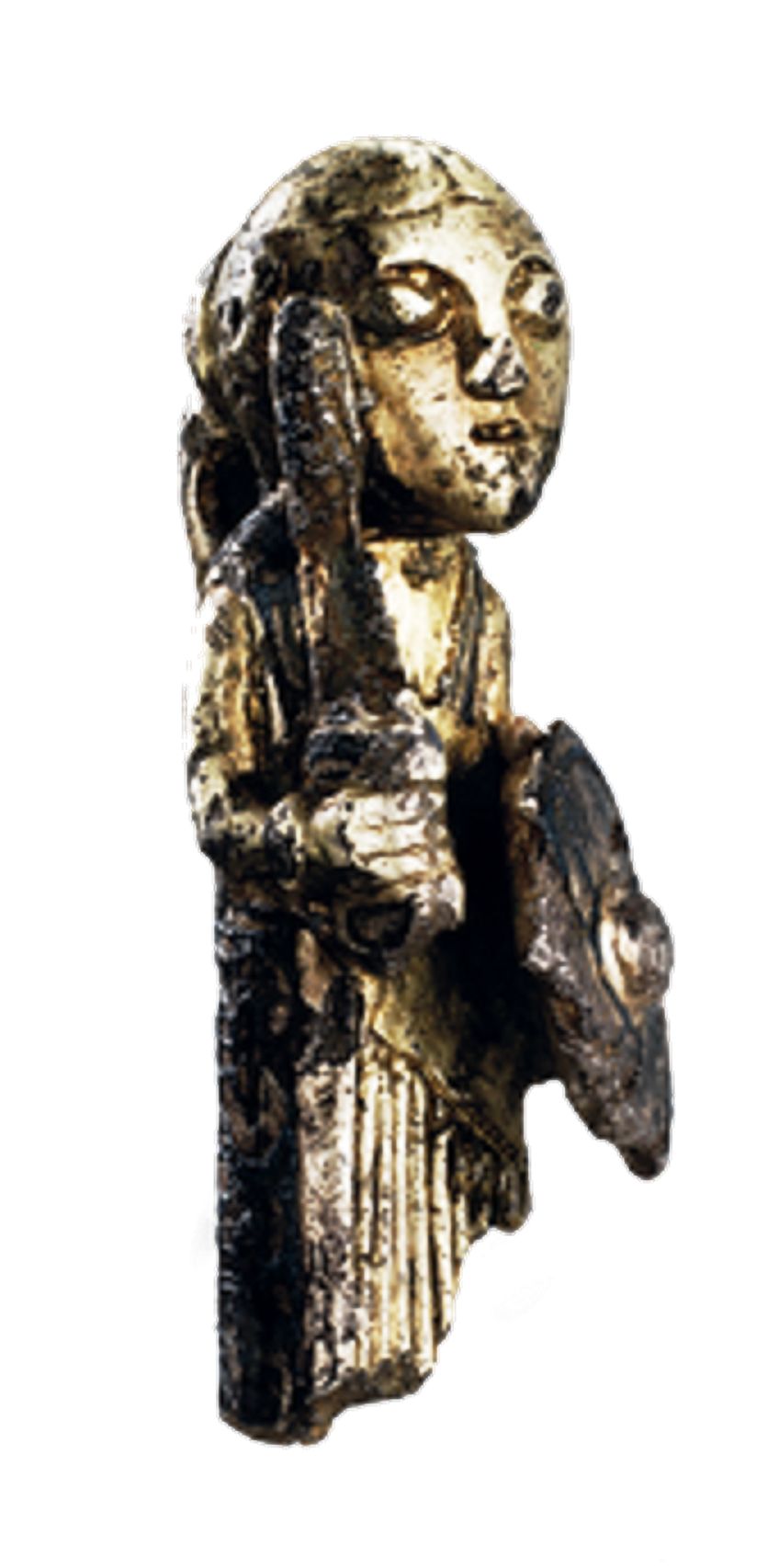 Valkyrie from Hårby (c. 800 AD), located in the National Museum of Denmark in Denmark; Gilwellian, CC BY-SA 4.0, via Wikimedia Commons
Valkyrie from Hårby (c. 800 AD), located in the National Museum of Denmark in Denmark; Gilwellian, CC BY-SA 4.0, via Wikimedia Commons
Not only is this figure a rare find because of what it represents, but it’s also a three-dimensional representation, which is nearly unheard of in Viking metallurgy artwork. It is believed that the figure is made from silver coins that had been melted down and repurposed. This pendant was likely held as a keepsake or for religious reasons by its owner. Strangely enough, there aren’t many accounts of Viking women participating in combat, but those that did were revered by their tribes, and more often than not considered to have supernatural abilities.
This is why many women were held in high regard in Viking societies and were often thought of to be sorcerers or volvas.
Coppergate Excavation (9th Century CE)
| Artist | Unknown |
| Medium | N/A |
| Date Created | 9th century CE |
| Dimensions | Unavailable |
| Current Location | Jorvik Viking Center, York, United Kingdom |
| Location of Discovery | York, United Kingdom |
In the late ’70s, the city council of York had ground excavated to make way for new development. However, they soon discovered loads of Viking artifacts including shoes, the foundations of homes, wooden tools, animal bones, the shells of sea creatures, roofing tiles, wattles, and even pieces of metal and workbench pieces!
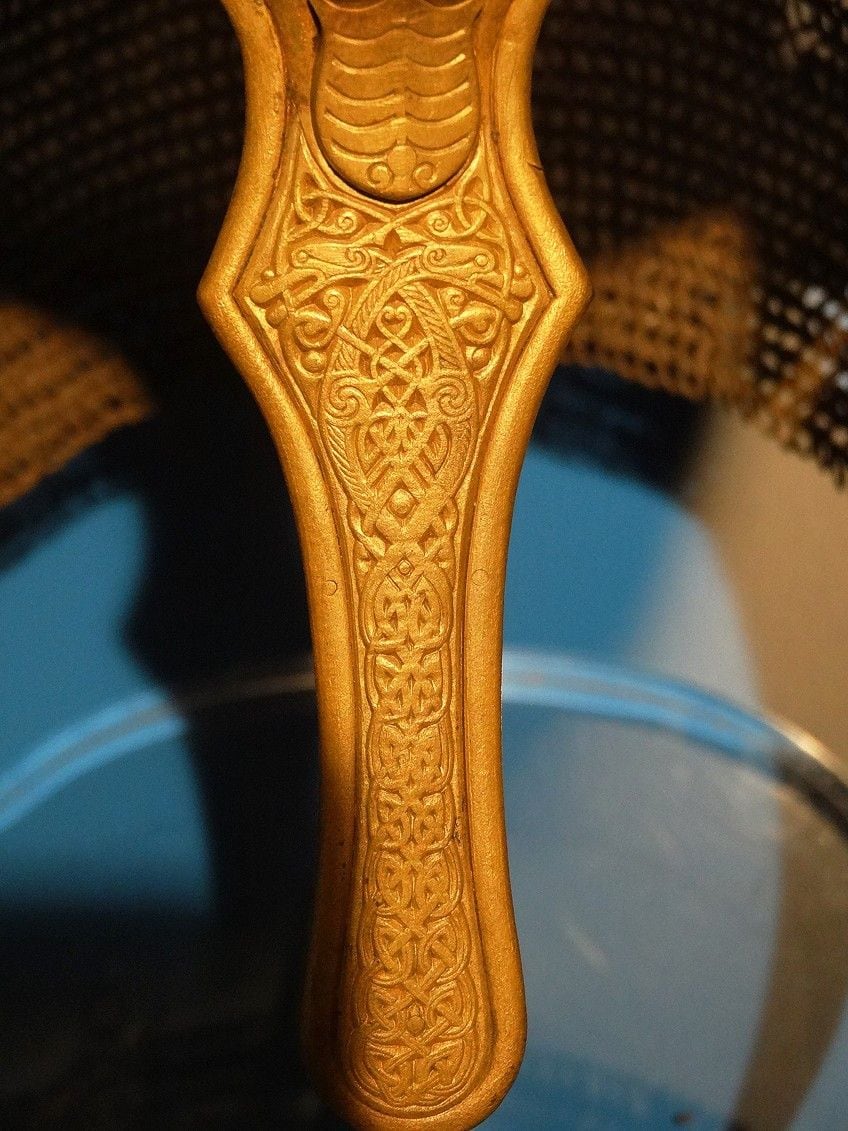 Coppergate Excavation (c. 9th Century), located in the Jorvik Viking Center in the United Kingdom; Jonathan Cardy, CC BY-SA 3.0, via Wikimedia Commons
Coppergate Excavation (c. 9th Century), located in the Jorvik Viking Center in the United Kingdom; Jonathan Cardy, CC BY-SA 3.0, via Wikimedia Commons
This was a huge find and the excavation was extended to cover roughly 1,000 square meters after the initial find. By digging and prodding only a short way down experts were able to uncover over 200 years of Viking history, and were even able to tell which places and cultures the settlers had touched by the time they had reached this location.
The Ulfberht Swords (9th Century CE)
| Artist | Ulfberht and Ingelrii |
| Medium | Crucible steel |
| Date Created | 9th century CE |
| Dimensions (cm) | 91 x 5 |
| Current Location | National Museum of Denmark, Copenhagen, Denmark |
| Location of Discovery | Denmark, Norway, Germany |
While these might not be Norse mythology artifacts, they are rather interesting. These swords have been found all over Europe and have since been studied due to the staggering amount that has been uncovered over the years.
The blades bare the name “Ulfberht and Ingelrii” inscribed on the blade and/or hilt, as was common for sword makers to do.
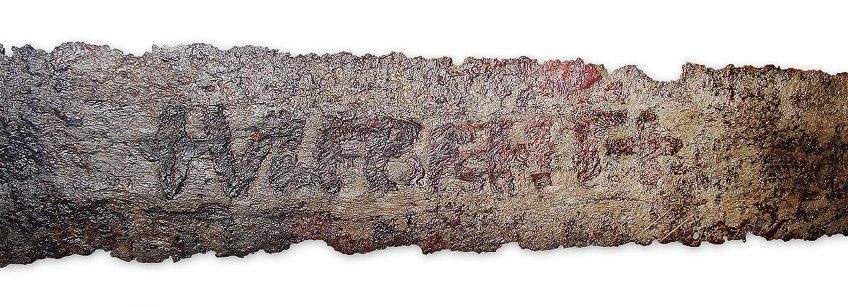 Ulfberht Viking Sword (c. early 9th Century), located in the National Museum of Denmark in Denmark; Ulfberht.jpg: Toranaderivative work: Martin Kraft, CC BY-SA 3.0, via Wikimedia Commons
Ulfberht Viking Sword (c. early 9th Century), located in the National Museum of Denmark in Denmark; Ulfberht.jpg: Toranaderivative work: Martin Kraft, CC BY-SA 3.0, via Wikimedia Commons
One might think that due to the sheer number of these found that the blades must have been of relatively good quality for them to be purchased in such great numbers. However, upon further investigation, it was found that the blades were actually of fairly poor quality, which makes sense considering that they appear to have been mass-produced. All blades found bearing this insignia are made of crucible steel. The Viking sword and axe were considered to be their primary weapons. This in conjunction with a battle mace and spear made them quite capable warriors whether it be in close-quarters combat or out in the open. Viking sword style changed and form a few times over the course of their reign.
The Vail of York Hoard (9th – 10th Century CE)
| Artist | Unknown |
| Medium | Copper, pewter, silver, gold, lead |
| Date Created | 9th-10th century CE |
| Dimensions (mm) | 20 (d) |
| Current Location | Yorkshire Museum UK and British Museum, UK |
| Location of Discovery | Harrogate, England, UK |
The Vale of York hoard is an ensemble of Viking artifacts that were discovered by a father and son treasure-hunting team in Harrogate, a small English town. The hoard consists of a number of items that were discovered inside a box underneath some lead sheeting. The box contained a number of silver bracelets, chains, and most notably over 600 coins.
The coins themselves have a number o Christian, Pagan, and Viking religious symbols on their surface. This indicates that they were likely created in the era when traditional Viking spiritual beliefs were being forged for Christianity.
The box containing the coins is lined with gold, and objects like jewelry and pots are adorned with reeds and animals. Experts have speculated that this hoard would have belonged to or was buried in honor of a great Viking leader (the equivalent of a king). This is truly a dream find for any archaeologist or historian, so one can only imagine the looks on the faces of the father and son team when they unearthed this truly breathtaking bunch of artifacts.
The Oseberg Heads (834 CE)
| Artist | Ancient Scandinavian peoples |
| Medium | Oak wood |
| Date Created | 834 CE |
| Dimensions (m) | 500 (h) |
| Current Location | Viking Ship Museum Oslo, Oslo, Norway |
| Location of Discovery | Oseberg farm, Tønsberg, Vestfold, Norway |
Even if your only knowledge of ancient history is a class you took in high school, you probably know that the ancient Egyptians loved to bury their dead with riches and even servants to make their experience in the afterlife a bit more comfortable. What you might not know is that Vikings did the exact same thing, but with a bit of that cool Viking flare to it. These five animal heads are all unique in appearance and are believed to have been made by a different artist, albeit with the same type of oak wood. These heads were discovered as part of the famous Viking Ship that was unearthed in Orenburg back in 1904. What the heads were used for and why they were made is unknown, but they are visually stunning, and their craftsmanship is rather impressive.
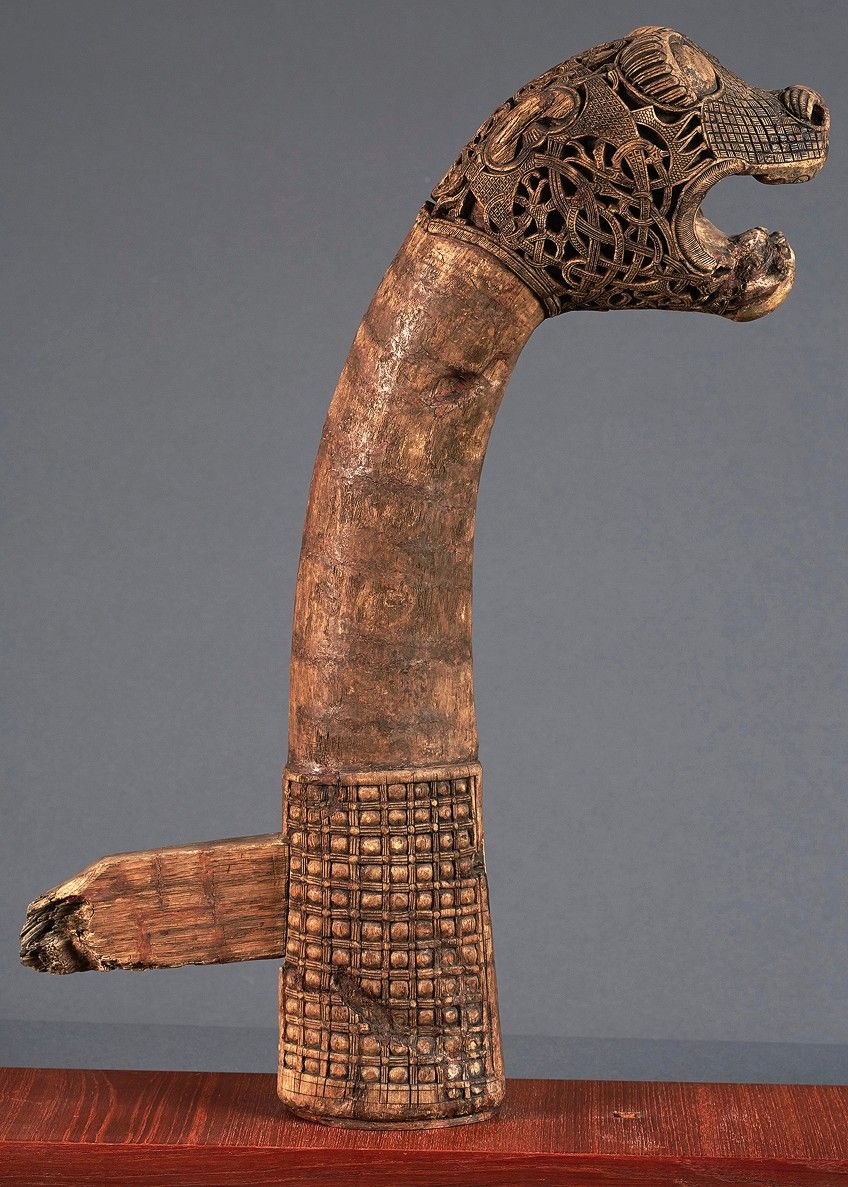 Oseberg Heads (c. 9th Century), located in the Museum of Cultural History in Norway; Kirsten Helgeland / Kulturhistorisk museum, UiO, CC BY-SA 4.0, via Wikimedia Commons
Oseberg Heads (c. 9th Century), located in the Museum of Cultural History in Norway; Kirsten Helgeland / Kulturhistorisk museum, UiO, CC BY-SA 4.0, via Wikimedia Commons
These were discovered with a whole host of other Norse artifacts in the 21-meter-long ship, but their intricate hand-cut carvings make them a stand-out show among the various other effects found at the scene. They were found in the central burial chamber of the ship, and of the five two have silver rivets inserted into their sides. While many have speculated, nobody really knows what to make of them.
The Gokstad Ship (890 CE)
| Artist | Ancient Scandinavian peoples |
| Medium | Wood |
| Date Created | 890 CE |
| Dimensions (m) | 23.80 x 5.10 |
| Current Location | Viking Ship Museum in Oslo, Oslo, Norway |
| Location of Discovery | Oseberg farm, Tønsberg, Vestfold, Norway |
We mentioned previously that seeing a Viking ship back in the day was more than enough to send fear shooting down your spine. Why? Well, the chances were that if you saw one of these coming toward you, you were about to be boarded, raided, and/or pillaged by a plethora of rather large, angry Scandinavian men and women. This ship is the largest and best-persevered example of a raiding ship, the vessel of choice for Vikings looking to conquer new lands.
These ships were unique as very little of the hull sat beneath the water, allowing it to enter shallow water without compromising its load-bearing capabilities. In fact, this ship was capable of carrying around 32 men with a full load.
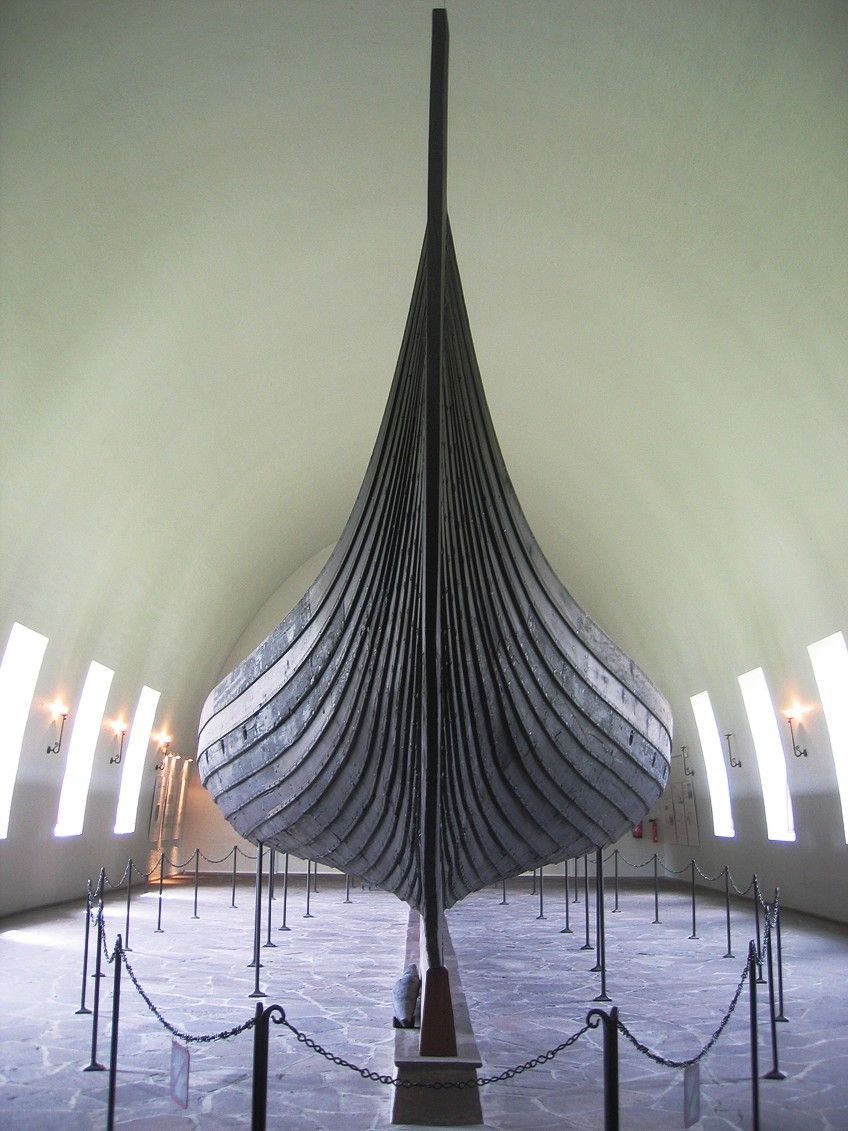 Gokstad Ship (c. 890 AD), located in the Viking Ship Museum in Norway; Karamell, CC BY-SA 2.5, via Wikimedia Commons
Gokstad Ship (c. 890 AD), located in the Viking Ship Museum in Norway; Karamell, CC BY-SA 2.5, via Wikimedia Commons
The ship was discovered as part of a burial mound in Norway by some farmers. It appears to be the burial place of quite a prestigious figure of the time, as many artifacts including wooden animal heads, coins, clothing, jewelry, and carvings were found at the scene. The ship measures around 24 meters in length and functioned as both combat, transport, and cargo vessels.
Silver Inlaid Axe head (900 CE)
| Artist | Ancient Scandinavian peoples |
| Medium | Crucible stell and silver |
| Date Created | 900 CE |
| Dimensions (cm) | 17.5 (h) |
| Current Location | University of Denmark, Kongens Lyngby, Denmark |
| Location of Discovery | Grave at Mammen, Iborg Municipality, Denmark |
While there are many artifacts that are associated with Viking culture, some of the most interesting are their weapons. Vikings were known for their ferocity in battle, so it should come as no surprise that their weaponry is something special and often of high-quality compared to other cultures of the time. This particular axe head is steel that has been inlaid with silver. This style of weaponry decoration has been called the “Maman style” after the location the axe head was discovered at. According to experts this style of weaponry had been popular around the 900s and remained popular for about 100 years or so.
This weapon was likely used in battle, even though it looks more like a showpiece than a side-arm.
The Ardnamurchan Boat Burial (10th Century CE)
| Artist | Ancient Scandinavian Peoples |
| Medium | Wood, iron, steel |
| Date Created | 10th century CE |
| Dimensions (cm) | 152 x 518.16 |
| Current Location | National Museum of Scotland |
| Location of discovery | Swordle Bay, Ardnamurchan, Scotland |
Although Viking burials are rare, it’s even rarer to discover one outside of Norway. Back in 2011, a survey team found the remnants of a full Viking ship burial on Swordle Bay in Scotland. Unfortunately, all that was left of the burial were the belongings of a deceased soldier in addition to the rivets used to bind the ship together. All of the wood had long decomposed.
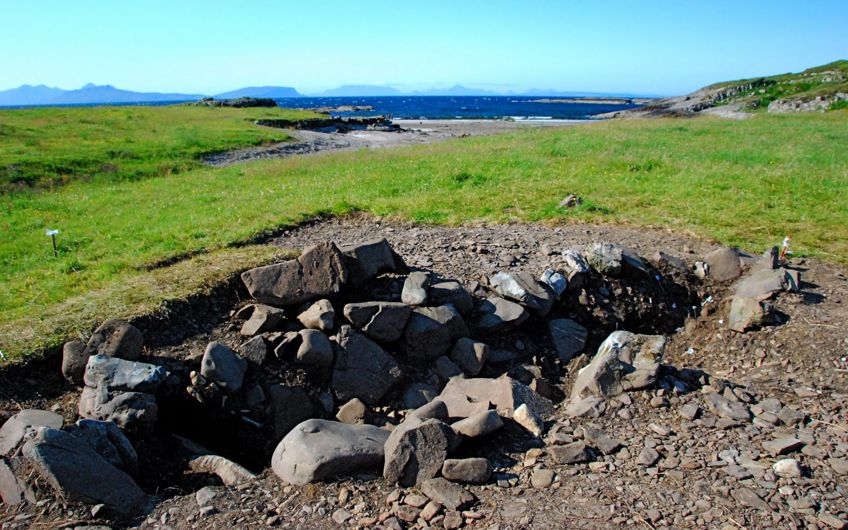 The Ardnamurchan Boat Burial (10th Century); Jon Haylett, CC BY 3.0, via Wikimedia Commons
The Ardnamurchan Boat Burial (10th Century); Jon Haylett, CC BY 3.0, via Wikimedia Commons
It is believed that the soldier in question must have been someone of importance considering that he had been buried with his sword, a number of offerings, and his shield.
Experts were so impressed by the find that the rivets of the boat had remained in the exact same spot that the wood had decomposed in that all recovered objects were/are on display at the National Museum of Scotland.
Gold Neck-Ring (10 Century CE)
| Artist | Unknown |
| Medium | Gold |
| Date Created | 10th Century CE |
| Weight (g) | 600 |
| Current Location | Archaeological Museum, University of Stavanger, Stavanger, Norway |
| Location of Discovery | Flaghaug, Avaldsnes, Norway |
This neck ring was found in the grave of its owner all the way back in 1834. It is a solid-gold 600-gram piece that has been described as one of the most intricately carved pieces of Viking jewelry found in modern times. The necklace was found in the grave of a male, which isn’t unusual considering that people of importance were often buried with both their own valuables and offerings.
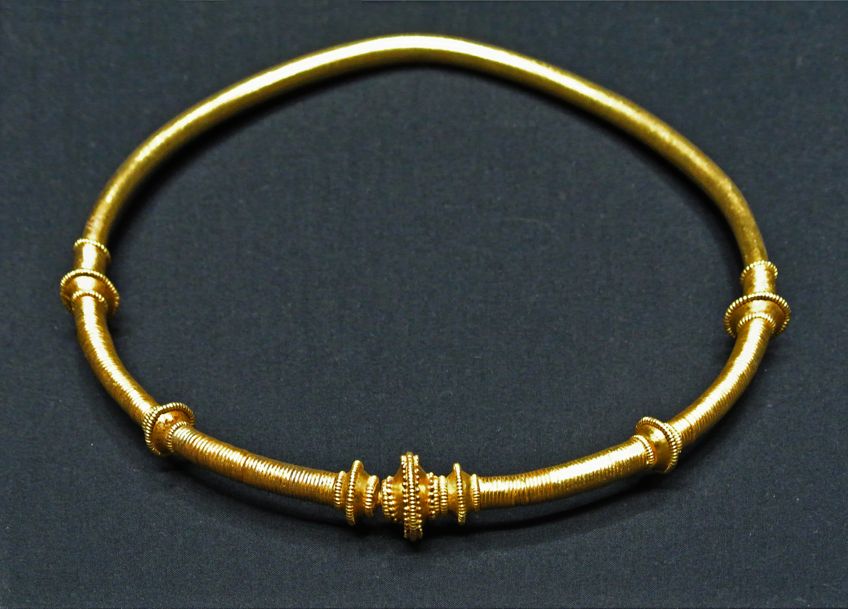 Gold Neck Ring (10th Century CE); Kunsthistorisches Museum, CC BY-SA 3.0, via Wikimedia Commons
Gold Neck Ring (10th Century CE); Kunsthistorisches Museum, CC BY-SA 3.0, via Wikimedia Commons
When it was discovered, the piece was still around the neck of its owner, which is rare considering how long the original owner had been deceased.
Although the necklace doesn’t have any ornate symbols carved into it, the rings around the band seem to have been hand-crafted, indicating that it was a once-off and likely pricey accessory.
The Hiddensee Hoard (10th Century CE)
| Artist | Unknown |
| Medium | Gold |
| Date Created | 10th century CE |
| Weight (g) | 600 |
| Current Location | Kulturhistorisches Museum of the Hanseatic town of Stralsund, Germany |
| Location of Discovery | Rügen, Germany |
As we mentioned previously Viking jewelry can be found pretty much all over the world as they managed to travel the entirety of Europe and even managed to reach Africa and the Americas. This is also an indication that their bling was of a pretty decent quality, and considering that much of it still exists today they definitely weren’t shoddy knockoff pieces.
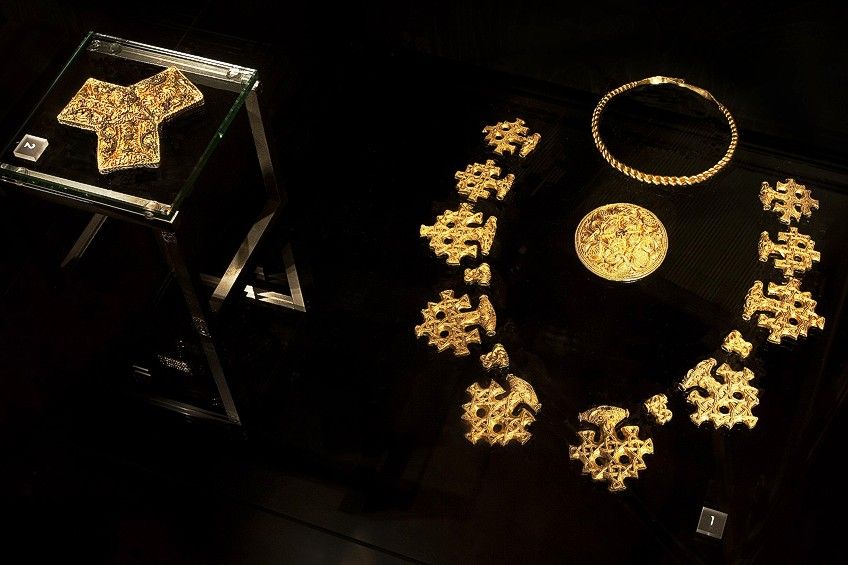 Hiddensee Hoard (c. 10th century), located in the Museum der Hansestadt Stralsund in Germany; Nationalmuseet – The National Museum of Denmark from Denmark, CC BY-SA 2.0, via Wikimedia Commons
Hiddensee Hoard (c. 10th century), located in the Museum der Hansestadt Stralsund in Germany; Nationalmuseet – The National Museum of Denmark from Denmark, CC BY-SA 2.0, via Wikimedia Commons
The hoard consists of a neck ring, 10 pendants, four spacers, and a brooch. All of them are solid gold and are thought to have been made by a royal workshop in Denmark, but this has not been confirmed. Pieces similar to this one have been found but they have all been made of silver, making this one not only cool to look at but unique as well.
Viking Weighing Scales (1000 – 1200 CE)
| Artist | Ancient Scandinavian peoples |
| Medium | Bronze |
| Date Created | 1000 – 1200 CE |
| Dimensions (cm) | Scale pans diameter: 9.5 – 10 Balance beam length: 19.6 Overall Height: 6.3 cm |
| Current Location | National Museum of Scotland, Edinburgh, Scotland |
| Location of Discovery | Kiloran Bay, Isle of Colonsay, Scotland |
While it might be difficult to imagine a world without money, there was a time when precious metals were the currency of choice. As bartering faded out for a more efficient means of trading, the Islamic means of trading with precious metals was adopted by many cultures and city-states, one of them being the ever-traveling Scandinavian Vikings. These scales were found in Killoran Bay Scotland and are believed to have belonged to a Viking trader. The sales are fully collapsible and were used to measure the weight percentage of precious metals used in trade.
Coins were often melted down for consolidation purposes and weighed to confirm their value, although the determination of purity required an entirely different process.
Winchester Manuscript (1031 CE)
| Artist | Thomas Malory |
| Medium | Calfskin Parchment |
| Date Created | 1031 CE |
| Dimensions (mm) | 583 x 396 |
| Current Location | Cambridge, UK |
| Location of Discovery | The library of Winchester College |
The Winchester Manuscript is by far the oldest piece of literature from the Anglo-Saxon Chronicle. This manuscript has the only depiction of Cnut the Great who served as both the king of Denmark and then later the King of England. The image depicts the late king and his wife (of English Origin) who are looked down upon by two angels.
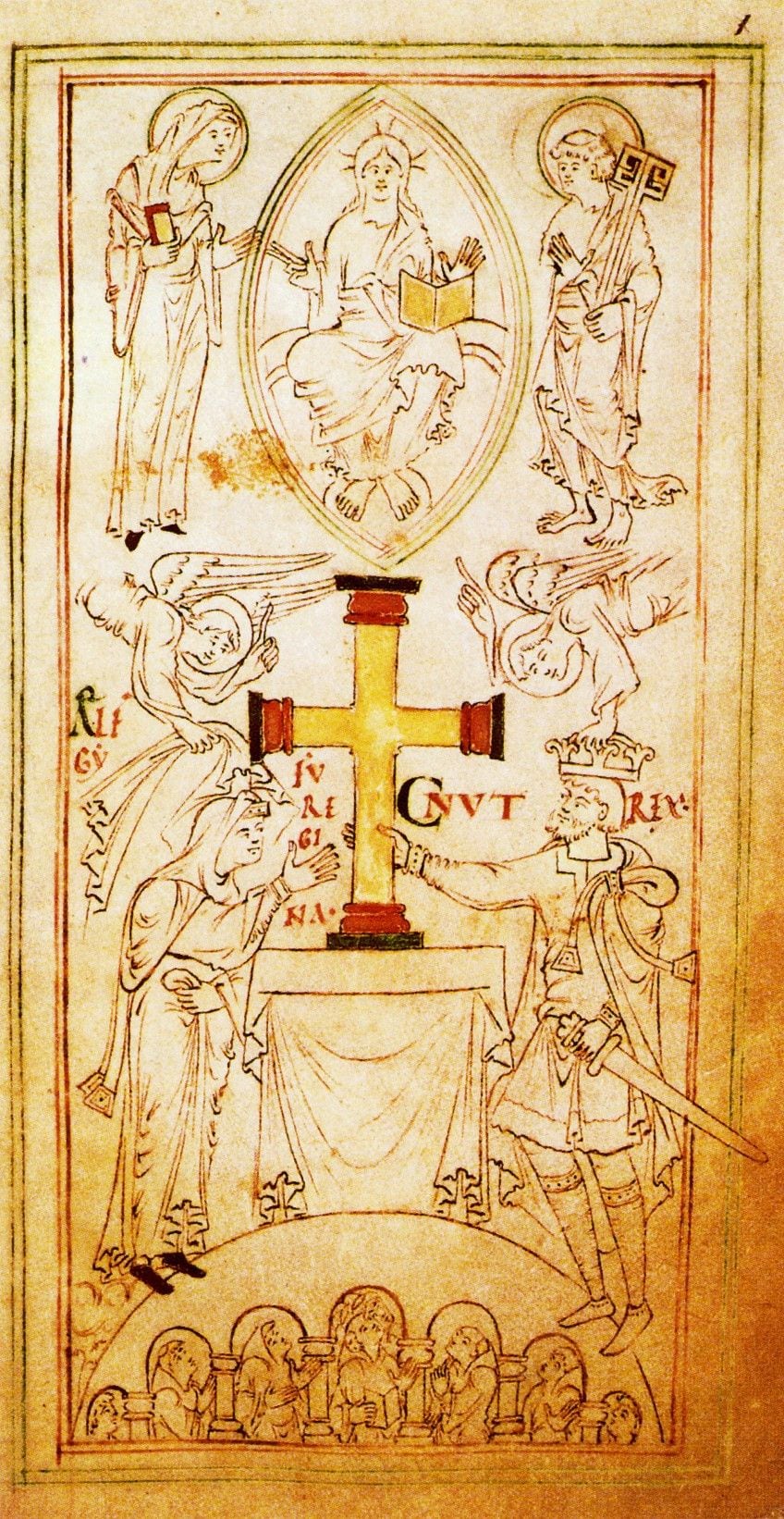 Winchester Manuscript (1031), located at the British Library Board in the United Kingdom; See description, Public domain, via Wikimedia Commons
Winchester Manuscript (1031), located at the British Library Board in the United Kingdom; See description, Public domain, via Wikimedia Commons
While there are loads of Norse mythology artifacts around the world, sometimes artifacts linked to real figures can be even more interesting. King Cnut is famously known for bringing around an ear of unity and peace in both Denmark and England after a long period of deep unrest and uncertainty and was portrayed as a leader who was deeply devoted to the church and its teachings.
Seeress’s Magic Staffs (1050 CE)
| Artist | Ancient Scandinavian peoples |
| Medium | Bronze |
| Date Created | 1050 CE |
| Dimensions (cm) | 82 (h) |
| Current Location | National Museum of Denmark, Copenhagen, Denmark |
| Location of Discovery | Gävle, Sweden and Fuldby, Ringsted, Denmark |
Superstition was always a stone’s throw away in the era that Vikings lived in. It should come as no surprise then that wands and staffs carried by powerful women were believed to imbue one with magical abilities, and were an integral part of ceremonies and rites. These two were found in Sweden and Denmark respectively. These staffs were more importantly an indicator of class among the upper crust of Viking society, and are thusly found in the graves of these women.
Although only a few have been found, the social status of their owners remains consistent, and it’s evident that these would have been kept on their person at all times.
The Hogback Tombstones (12 Century CE)
| Artist | Unknown |
| Medium | Redstone |
| Date Created | 12th century CE |
| Dimensions (m) | 2 x 0.34 x 0.32 |
| Current Location | Historical Place Museum in Glasgow, Scotland |
| Location of Discovery | Govan and Linthouse Parish Church, Edinburgh, Scotland |
The Hogback Tombstones are essentially grave markers used by Vikings who resided in the British Isles. The largest concentration of these tombstones can be found in the historical place museum in Glasgow, Scotland. These stones are highly decorated and have been found with different marking for each individual grave. It is believed that some of the tombstones are meant to be a representation of a typical Viking home’s roof. In other examples, these tombstones have intricately carved dragon and animal heads on display. A throughline between these two designs would be runes and patterns around the lower perimeter of each tombstone.
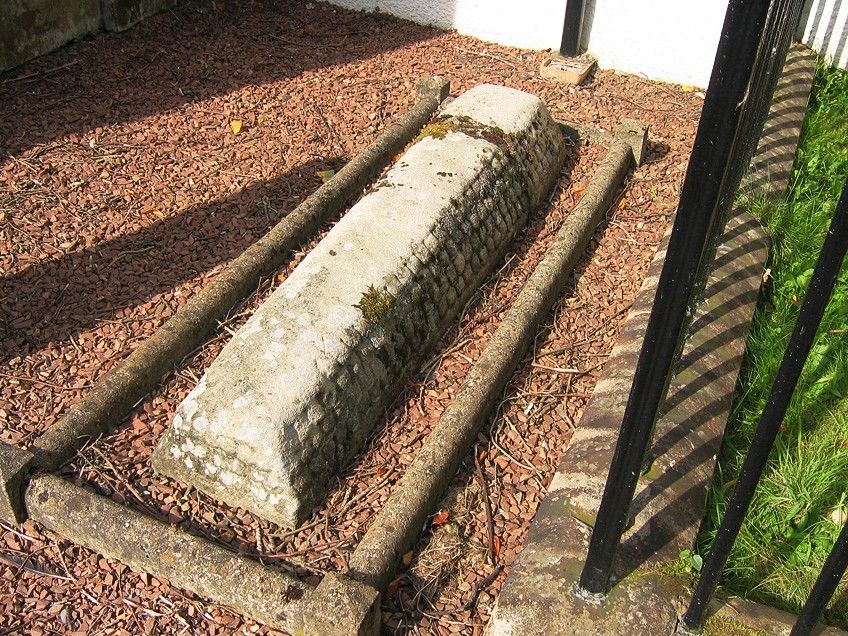 Hogback Tombstone (c. 10th Century), located in the British Museum in the United Kingdom; User: Supergolden, CC BY-SA 3.0, via Wikimedia Commons
Hogback Tombstone (c. 10th Century), located in the British Museum in the United Kingdom; User: Supergolden, CC BY-SA 3.0, via Wikimedia Commons
Viking Bone Skates (12th Century CE)
| Artist | Unknown |
| Medium | Leather and horse bone |
| Date Created | 12th Century CE |
| Dimensions | Unavailable |
| Current Location | National Museum of Ireland, Dublin City, Ireland |
| Location of Discovery | York, England |
In countries in the Northern Hemisphere, ice skating is a fairly common pastime in the winter months, but few people know that the practice of ice-skating dates back way further than most of us can imagine. These skates are made of leather and horse bone and were used by ancient Scandinavians to traverse icy terrain on their way to trade with other settlements during winter.
As far as Norse artifacts go these are among some of the more light-hearted and relatable ones.
Over 40 pairs of this type of ice skate have been found in York England over the years, and it’s believed that they were quite popular before metal became a more accessible and easily worked material as technology and our understanding of the properties of materials processed. There is actually a written account of children attaching bones to their ankles using leather straps and sliding across frozen bodies of water. It is believed that unlike how modern ice skates are used, these were used in conjunction with two large sticks, much in the same way that you would push yourself forward when skiing.
The Lewis Chess Pieces (1150 CE)
| Artist | Ancient Scandinavian peoples |
| Medium | Whale tooth and walrus ivory |
| Date Created | 1150 CE |
| Dimensions (cm) | Pawns: 3.5 – 5.8 Other Pieces: 7 – 10.2 |
| Current Location | National Museum of Scotland, Edinburgh, UK |
| Location of Discovery | Beach at Uig, Isle of Lewis, Scotland |
The Lewis chess pieces are arguably one of the most astounding discoveries of Viking artifacts, even by modern standards. Upon discovery, there were around 93 artifacts present, of which around 78 of them were chess pieces of varying size and materials. Other artifacts discovered were tablemen boards (of which there were 14) and a single belt buckle.
The collection of artifacts was found by one Malcolm McLeod who is said to have found the pieces inside a collapsed sandbank near the village of Peighinn Dhomhnuill. Around a year or so later the pieces from 1831, were found on display at the Society of Antiquaries of Scotland in Edinburgh. Most of the pieces are made of walrus teeth, but others have also been said to be made of whale teeth.
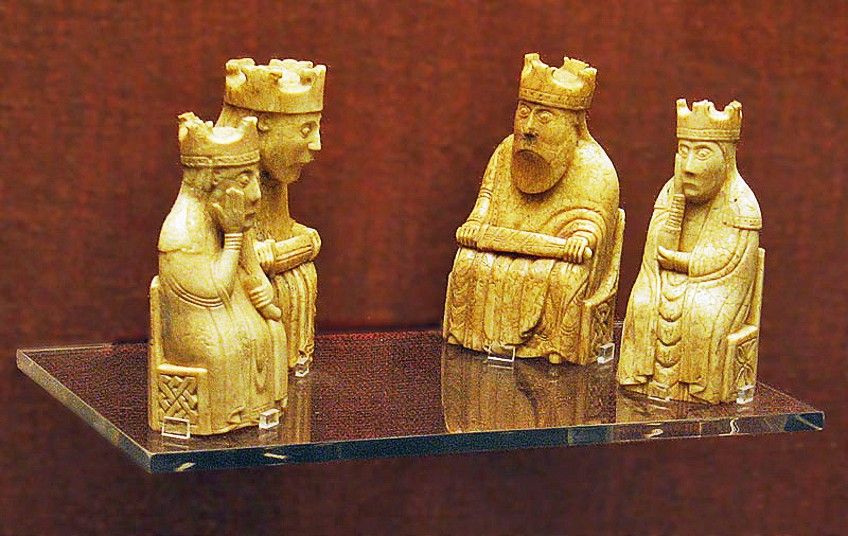 The Lewis Chess Pieces (c. 1150 AD), located in the British Museum in the United Kingdom; Photograph © Andrew Dunn, CC BY-SA 2.0, via Wikimedia Commons
The Lewis Chess Pieces (c. 1150 AD), located in the British Museum in the United Kingdom; Photograph © Andrew Dunn, CC BY-SA 2.0, via Wikimedia Commons
Over the years after their discovery, many of the pieces (around 82) were sold off but can still be found on display in museums in the region from time to time. Only 11 pieces remain on display in Edinburgh in the National Museum of Scotland, and it is said that many pieces of this chess set, particularly pawns, are missing from this set.
The set consists of eight kings, eight queens, 15 knights, 16 bishops, 13 rooks, and 19 paws. All of the figures are human representations with the only exceptions being the pawns which are simple geometric shapes. As can be expected, the knights are carved true to form, featuring a horse, spear, and shield. Instead of a fortress, rooks are standing knights, and some contain traces of the red and white stain, which has led experts to believe that these colors were used instead of the (now) traditional black and white.
Now that you know what a Viking is, what they did, where they traveled, and some of the awesome things they left behind for us to find, it’s time for you to get out there and put your newfound knowledge to the test. Remember that artifacts allow us to glimpse into the lives of our ancestors and should always be treated with great care and respect.
Frequently Asked Questions
What Is a Viking?
The term Viking is actually a modern term that refers to a group of largely nomadic Scandinavian peoples. They made a name for themselves by traveling all over the world and trading with other cultures. They were also known to be fearless warriors who were not afraid to pillage and pirate for what they wanted.
How Did Vikings Die Out?
There were loads of factors that made the way of the Vikings die out. Vikings relied on so-called shock combat, which means they took their enemies by surprise with overwhelming force. As Christianity spread and communities became better at defending themselves, Viking tactics and their way of life were no longer effective, and eventually faded away.
Where Do Vikings Still Exist?
While there certainly aren’t people going around raiding and pillaging settlements throughout Europe there are still descendants of Vikings all over the world. There are ones in Scandinavia, as well as other European countries where Vikings managed to settle down.

I am deeply passionate about history and am constantly fascinated by the rich and complex stories of the past. As the editor-in-chief of learning-history.com, I have the opportunity to share this passion with a wide audience through the creation and distribution of engaging and informative content about historical events, persons, and cultures. Whether it’s through writing articles and blog posts or creating videos or podcasts, I strive to bring the past to life in a way that is both accurate and enjoyable. My expertise in history, combined with my strong writing and communication skills, allows me to effectively communicate complex historical concepts and make them accessible and interesting to a wide range of readers. I am truly grateful for the opportunity to share my love of history with others through my work on learning-history.com.

